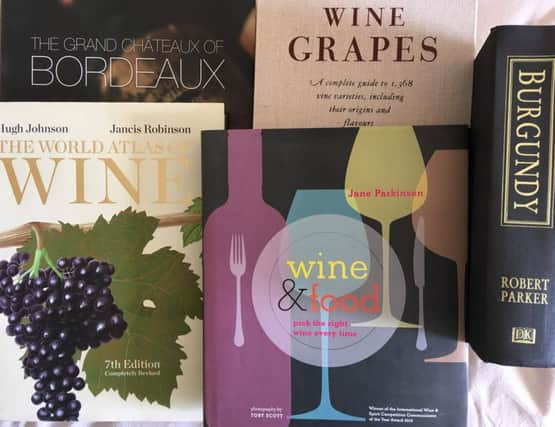A leisurely way to learn about wine


There is the oft heard phrase ‘I don’t know very much about wine, but I know what I Like’. But knowing a little more, either about the wine you are drinking, or about the vast subject of wine itself, can increase your enjoyment of the beverage and appreciation of just what happened to produce the precious liquid inside your bottle.
Of course, there are different ways in which you can increase your vinous knowledge, such as joining wine club like the Arundel Wine Society (run by me!), or for those wishing to take a more formal approach, studying on one of the courses run by the Wine & Spirit Education Trust at a local Wine Academy. But for a more leisurely approach to learning about the subject, this can be achieved from the comfort of your favourite armchair and a small (initially!) collection of books.
Advertisement
Hide AdAdvertisement
Hide AdOver the 35 years or so of working in the wine industry, I have accumulated a small library of wine books, both old and new. Some information doesn’t date, whereas other details can be constantly changing, particularly with regards to new technology and systems used for both growing grapes and making wine. Here is a selection of five of my favourite wine books for ‘dipping into’ rather than reading from cover to cover.
First and foremost, has to be The World Atlas of Wine, by Hugh Johnson and Jancis Robinson, two of the wine world’s greats. First published as far back as 1971, it is now in its 7 th edition and is both very readable and extremely informative, with a wealth of detailed information and maps. My second book is one of many I have on my favourite wine region – Bordeaux. Simply called The Grand Chateaux of Bordeaux, published by teNeues in 2015, it has some great photography of the top chateaux, wineries and vineyards of this world-famous region. With text in English, German and French, it can improve your language skills at the same time.
My third book is a scholarly tome by the famed Robert Parker, first published in 1991, called Burgundy. In the authors words, the purpose of the book is “to facilitate the reader’s understanding of the world’s most complicated wine region”. Extraordinarily comprehensive. My fourth choice is an even larger tome, again from the celebrated Jancis Robinson, called Wine Grapes. This is a serious work of reference, but no less readable for that. It is a ‘Complete Guide to the 1,368 vine varieties, including their origins and flavours’. Yes, you did read that correctly – one thousand three hundred and sixty-eight. Fascinating.
The fifth book in my favourite five list is ‘Wine and Food’ by Jane Parkinson, first published in 2014. A very accessible read, describing the flavours of a great number of wines and how these may be matched to a variety of foods. An up-to-date explanation of food and wine pairing, bringing the enjoyment of drinking wine to life. In the words of Mahatma Gandhi “Live as if you were to die tomorrow. Learn as if you were to live Forever.”
Advertisement
Hide AdAdvertisement
Hide AdRichard Esling BSc DipWSET is an experienced wine consultant, agent, writer and educator. An erstwhile wine importer, he runs a wine agency and consultancy company called WineWyse, is founder and principal of the Sussex Wine Academy, chairman of Arundel Wine Society and is an International Wine Judge. Follow him on Twitter @richardwje or visit www.winewyse.com.